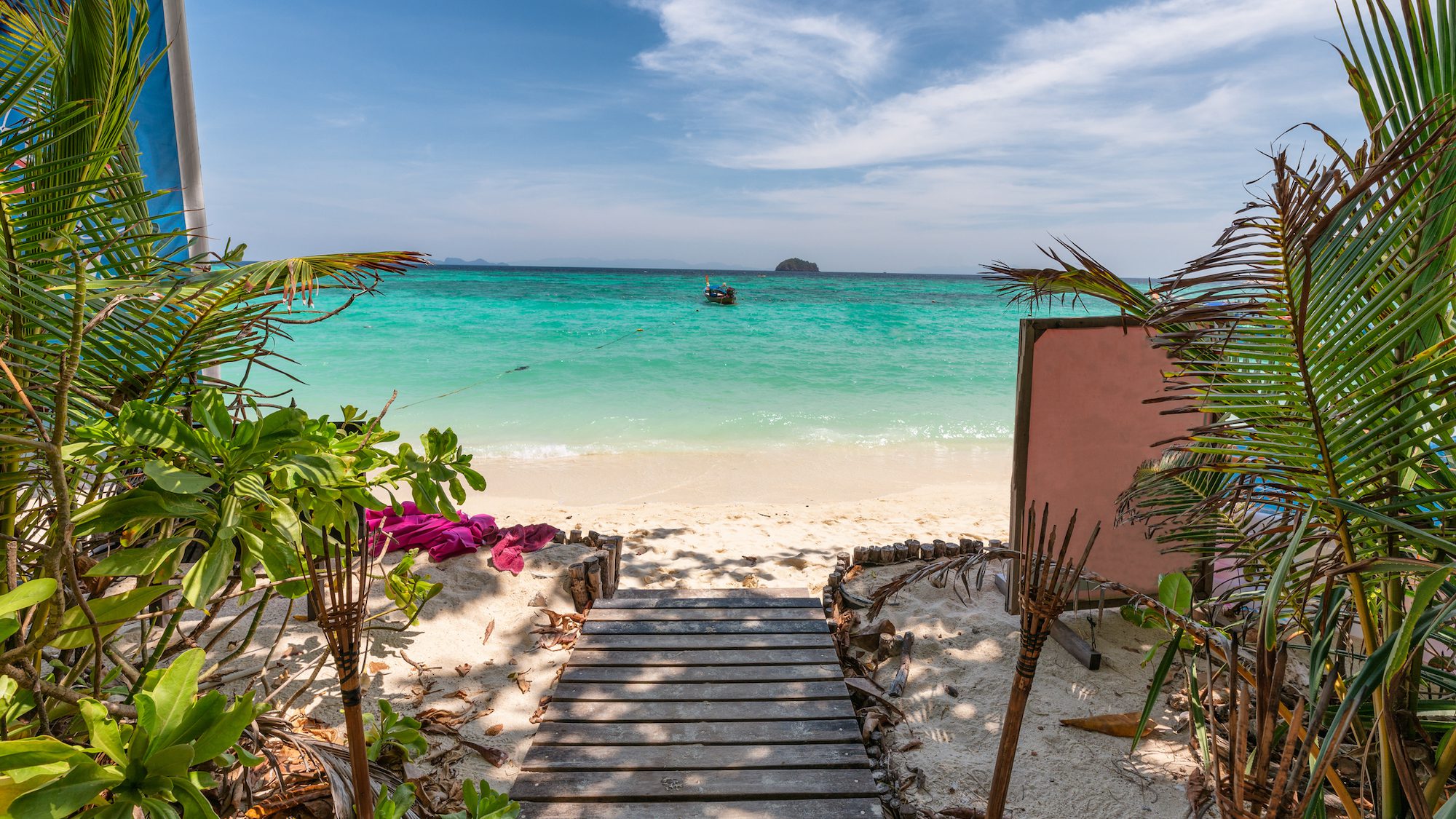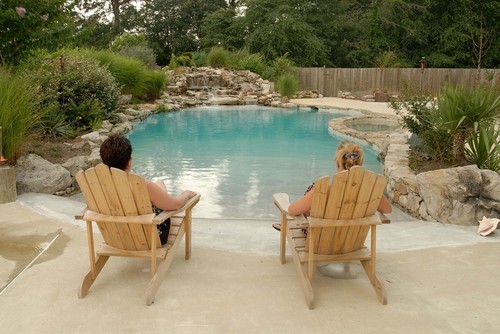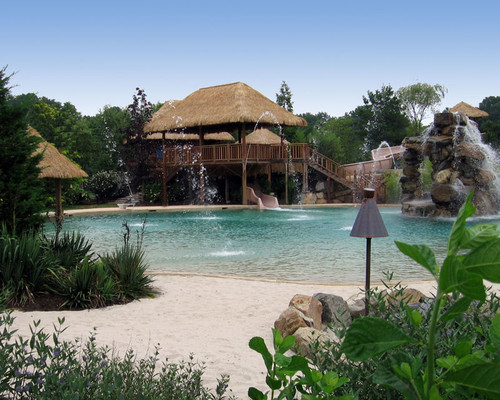
Mumemories/Getty Images
While some people might be fantasizing about cooler weather, festive pumpkins, and falling leaves, we’ll admit: We’re still over here dreaming of a beach vacay. And technically, summer isn’t over yet—but with the world outside feeling like a dumpster fire, we aren’t too keen on traveling, even if it is to a tropical paradise.
But what if you didn’t have to leave your home to feel the sand between your toes?
That could be your reality with this latest outdoor trend: building your very own backyard beach. (OK, it’s also sometimes called a swimming pond.)
“Backyard beaches can be very impressive, and I think they’re set to be a trend going forward,” says Dan Bailey, president of WikiLawn.
“Swimming ponds can be an excellent addition to the backyard,” adds Raymond Campbell of Lost Eden Ponds, a company that builds backyard beaches, sand-entry pools, and swimming ponds. “It’s a body of water suitable for cooling off on a hot day, while offering a naturalistic appearance and creating a parklike experience every day.”
While building your own beach might seem insanely complicated, the experts assure us it’s relatively straightforward.
So don’t put away the bathing suit and beach balls just yet! Keep reading for a short and sweet guide that tells you everything you need to know to build a private beach in your backyard.
How to build a backyard beach
“It’s easier than you might expect—about as difficult as installing an in-ground pool, really,” Bailey says.
Hurrah! But before you bust out the industrial margarita blender and invest in some cozy lounge chairs, you’ll want to make sure you’re even allowed to build a pond in your backyard.
Whether you live in a city with tight building codes, or just a neighborhood with a homeowners association, check that building your own backyard beach won’t ruffle any feathers before you break ground for construction.
Once you’ve done that, you’ll want to plan out the size and design of your backyard beach.
“The space for the water will need to be measured, and depending on the makeup of your soil, digging may prove difficult,” says Bailey.
If you’re fairly confident in your DIY skills, you can consider renting some digging equipment. Otherwise you’ll want to hire a pro to handle this step and the next one, which involves pouring concrete or something else that can seal off the space and create boundaries for your beach pool.
“Having a professional do it ensures you’ll have room for the pump, filter, and other equipment you’ll need to keep the water from growing stagnant,” he says.
A concrete pool surrounded by sand is the best way to get that Instagram-ready beach look in a backyard setting.
“The overall design of these beaches is relatively simple. They’re essentially an in-ground pool built with a special type of concrete with sand mixed in,” says Michael Dean, co-founder of Pool Research. “Instead of a regular pool with edges, these pools generally have a gradual slope that resembles that of a sandy beach.”
Among the possible materials, concrete offers the most flexibility when it comes to design, shape, and size, Dean explains. Plus, with a few built-in extras like a pump, a concrete/sand pool combo will be a lot easier to maintain.
And speaking of a pump, be sure you get one—otherwise you may just end up with a hellish mosquito pond rather than your own personal oasis.
“Remember that anytime you introduce stagnant, standing water to a landscape, mosquitoes love it,” says Paul Miller, founder of the Tick and Mosquito Project.
How much does a backyard beach cost?
Now that you know the basics of building your own backyard beach, it’s time to talk numbers—as in how much this heavenly oasis will cost you.
It turns out, the cost will be similar to what you’d pay to install a typical in-ground concrete pool. On average, that runs $50 to $100 per square foot, Dean says.
“You should expect to pay $30,000 to $60,000 to complete the construction of your pool, plus a premium for the sand and beach features,” he says.
For your beach, Bailey recommends using “play sand,” which he says “can be bought much cheaper and should feel almost identical once it’s warmed by the sun.”
How much you’ll need depends on the size of your beach, but if you want enough sand to feel truly beachy (and for kids to build sandcastles in, for example), you’ll want 600 to 800 pounds. (At stores like Home Depot, play sand usually runs $5 for 50 pounds.)
“At that point you might look into renting equipment to quickly transport and distribute it,” Bailey says. “There are places where you can actually get it delivered, too.”
Because your backyard beach functions like a pool, you’ll also want to consider the maintenance costs involved.
“Upkeep costs depend on the intent for the space,” says Bailey. “But if the pool is going to be used regularly, you’ll need to keep up with the cleaning and chemical treating, which will run you a few hundred dollars annually.”
We don’t know about you, but this just might be the next best way to kick back, relax, and make use of that vacation budget.
The post Can’t Go to Bali? Build a Blissful Private Beach in Your Own Backyard appeared first on Real Estate News & Insights | realtor.com®.


high quality furniture retailer online - furnitureretro.com
ReplyDelete